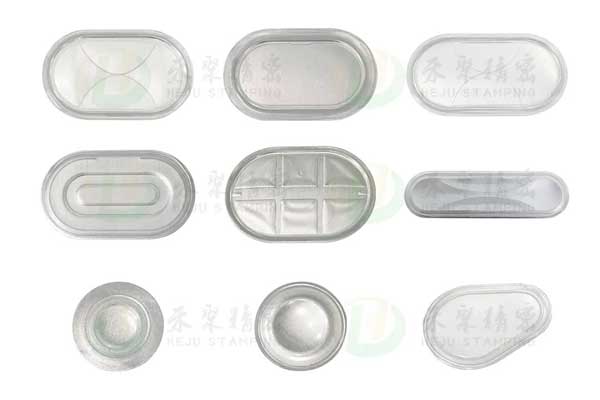Analysis of Common Problems in the Welding of Prismatic Lithium Battery Safety Vents
Laser welding of power batteries is a core process in battery manufacturing, directly impacting battery safety, sealing, and conductivity. Laser welding of power batteries spans the entire process from cell to module to pack, involving welding of positive and negative battery terminals, lithium battery safety vents, battery adapters, battery casing assembly, and module and pack welding. The precision of this process directly impacts battery safety and lifespan.
The following are common problems that can occur during the welding process of lithium battery safety vents, along with their causes, and are detailed below.
Overburning, Perforation, or Explosion
Problem Description
The prismatic lithium battery safety vent is a thin sheet of pure aluminum with varying thicknesses at different locations. When welded with an infrared fiber laser, due to the high reflectivity of solid aluminum to infrared laser light and its thinness, improper welding techniques can easily cause overburning, perforation, or explosion during the laser welding process, rendering it ineffective in providing pressure relief and explosion protection.
Cause Explanation
- Excessive laser power: During laser welding, if the laser power is set too high, the laser beam transfers a large amount of energy to the disc in a very short period, rapidly raising the local temperature above its melting point. This can cause the material to melt or even vaporize, resulting in perforations or explosions.
- Excessive welding time: Excessive welding time can also cause the disc to be continuously heated, with the accumulated heat exceeding the material’s tolerance, causing melting or perforation.
- Material Characteristics: Battery bursting disks are mostly thin aluminum sheets, which have a high laser reflectivity. However, they are also very thin, making them more susceptible to deformation or melting due to the laser energy.
Weld Quality Issues
Problem Description:
The weld seal is crucial for lithium battery bursting disks. Improper welding procedures or improper welding parameter settings can result in leaks or unstable weld quality.
Cause Explanation:
- Improper heat input control: Controlling heat input during welding directly impacts weld quality. Excessive heat input and excessively high temperatures in the weld area can lead to excessive melting, cracks, or porosity. Excessive heat input can result in incomplete fusion or insufficient weld strength.
- Improper welding parameter settings: Welding parameters include welding current, voltage, and speed. Proper settings of these parameters are crucial to ensuring weld quality. Improper parameter settings, such as excessive current or slow speed, can lead to unstable weld quality.
- Material Cleanliness: If the rupture disk is not thoroughly cleaned before welding, impurities such as oil and oxides on the surface may affect the wettability and adhesion of the weld, resulting in poor weld quality.
Deformation and Collapse
Problem Description:
During the welding process, the rupture disk is prone to melting or deformation, which can lead to collapse.
Cause Explanation:
- Excessive Welding Temperature: During welding, if the welding temperature is too high or the welding time is too long, the rupture disk may melt or deform locally due to uneven heating.
- Material Thickness and Stiffness: Battery bursting disks are mostly thin sheets with relatively low thickness and stiffness, making them more susceptible to deformation due to thermal stress during welding.
- Welding Position: The choice of welding position can also affect the deformation of the rupture disk. Suppose the welding position is not selected properly, such as welding directly at the center or edge of the rupture disk. In that case, uneven heating may result, leading to deformation of the disk.
The Importance of Prismatic Battery Rupture Discs
The explosion parameters of a prismatic battery rupture discs are determined based on the battery’s design and usage requirements. Furthermore, the opening force of the battery rupture discs must be properly controlled. Excessive or insufficient force will affect the valve’s effectiveness. The battery safety vent’s explosion process primarily consists of two phases: pressure accumulation and explosive release. During the pressure accumulation phase, the gas pressure inside the battery gradually increases. Once it reaches the threshold, the lithium battery safety vents, under pressure, rapidly bursts open. The valve opens fully, entering the explosive release phase, allowing internal gas to be rapidly discharged through the valve, maintaining the battery’s safe operating condition.
Heju Precision Prismatic Lithium Battery Safety Vents – Focusing on Unique Value

The core technology of “cold forging and stamping”: The core of prismatic lithium battery safety vents lies in the consistency of product bursting values. The direct result of this technology is that the discreteness of the bursting pressure of each safety vent is compressed to the extreme. There are many models and comprehensive specifications. The single pressure difference can reach 0.02MPA, CPK>2.0, and more than 50 first-line punching machines. The batch stability reaches a nearly demanding level, which provides a solid physical foundation for the requirement of “quick response”. Contact us for your project.
